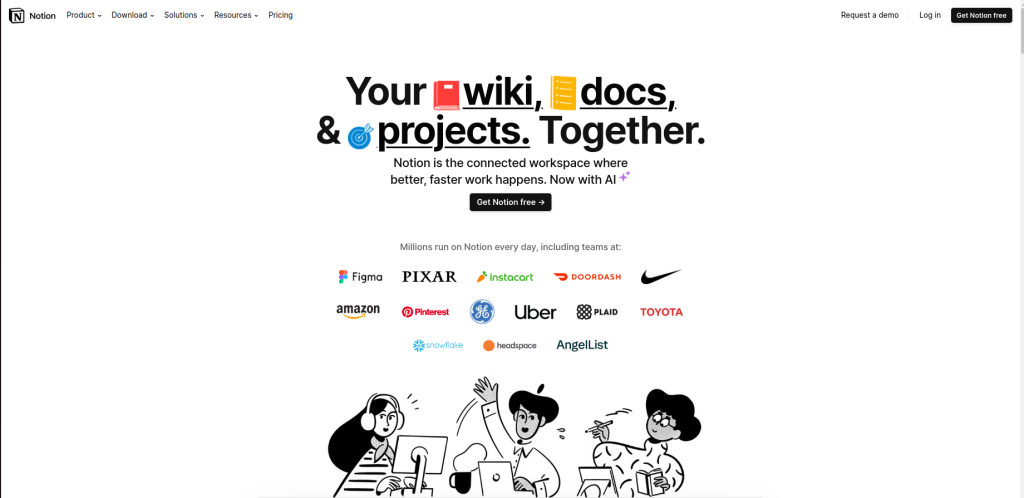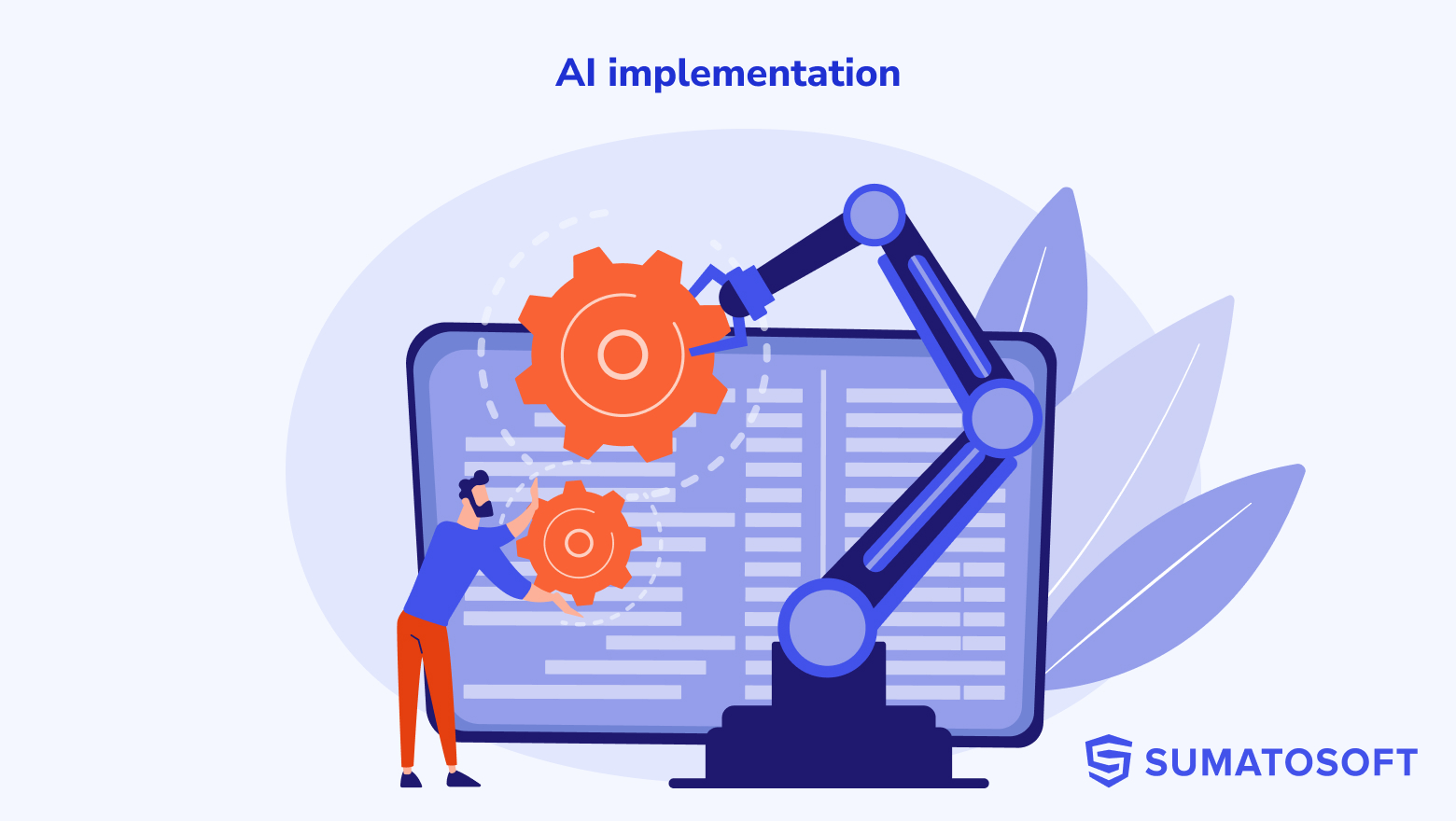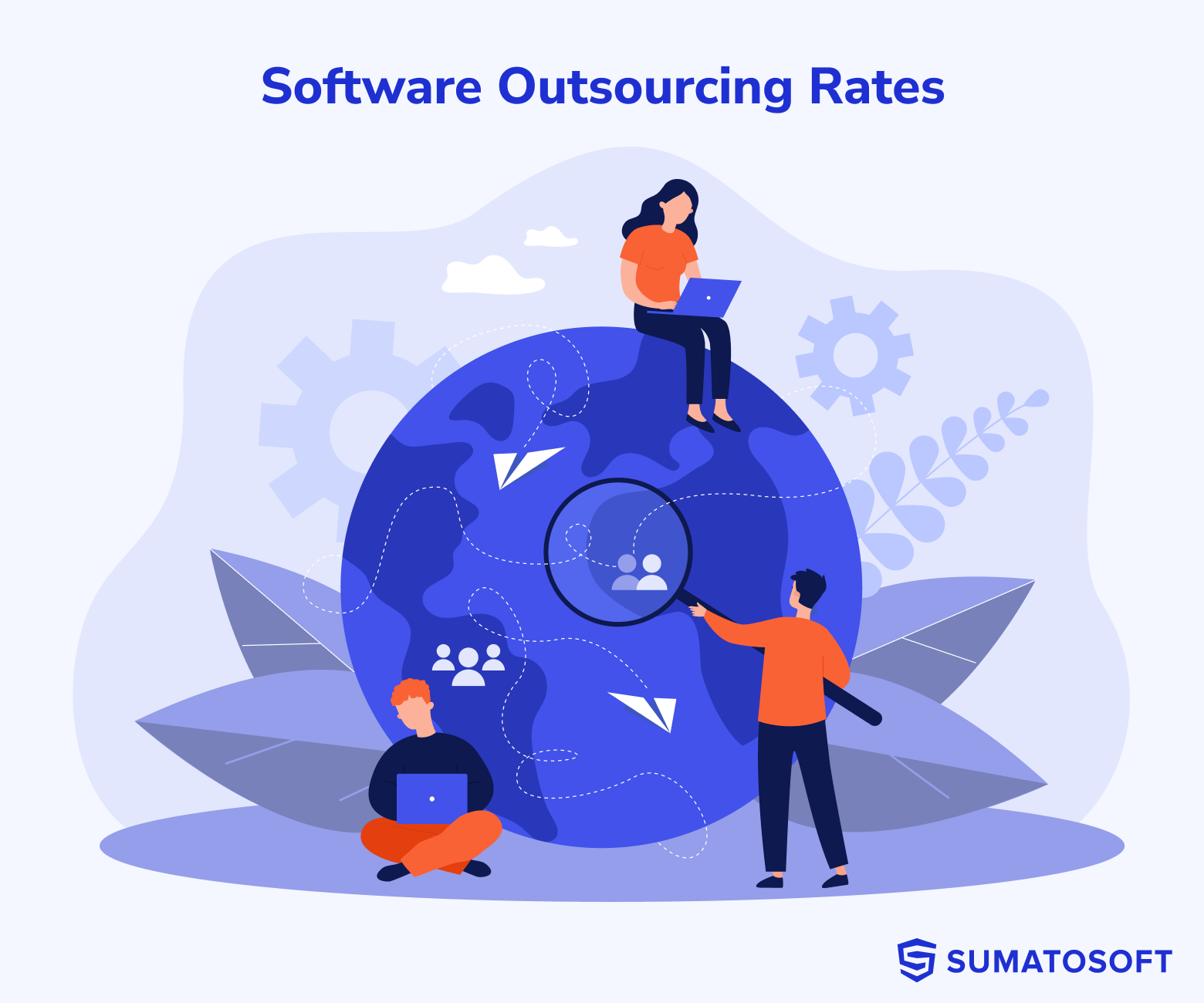Micro-SaaS Guide with 10+ Unique Micro SaaS Examples


In the technological space, SaaS refers to software as a service. Back in the days, people used to purchase software that required only one time license key/fee. This approach was good but also required customers to continuously pay for new versions every year. This kept the customers in a loop to keep buying the new versions. Here, SaaS emerged as a new prospect and entered the market. SaaS is a method of delivery in which the whole software is hosted on the cloud by the third party service provider, and you get access, via any device, to the most recent versions by paying monthly or yearly.
The SaaS industry has grown rapidly over the past ten years and is anticipated to surpass traditional enterprise software in the years to come. Gartner forecasts worldwide public cloud end-user spending to reach nearly $600 billion in 2023. We, at SumatoSoft, have analyzed and presented insightful data in this guide through which you’ll learn about the escalating popularity of micro SaaS and in what aspects micro SaaS is different from SaaS tools. We will also discuss a few unique examples, how they work on micro SaaS models and what purpose they serve.
What is Micro SaaS
Tyler Tringas was the pioneer of the concept of Micro SaaS in the tech industry and his business storemapper is one of the practical and fundamental examples of micro-SaaS model in real-time. Micro SaaS, as the name itself suggests, is a small scale SaaS business dealing with a specific niche or domain.
Micro SaaS is controlled by an individual person or a smaller group of teammates with a tiny group of users and specifically without any external funding.
Significantly, minimal resources are requisite to establish and maintain micro SaaS as they target the smaller groups. These businesses gain strong profits and operate with location independency and slightest risk. Due to recurrent revenue and presumably low risk, this concept proves to be the destiny of software businesses.
The term “Micro-SaaS” was coined with the notion of problem-solving that utilizes the least amount of resources.
SaaS Vs Micro SaaS: Difference
The primary disparity is that all traditional full-sized SaaS businesses address a wide range of issues whereas micro-SaaS targets a subset of issues for a particular group of audience. However, a number of many other significant differences against six key points are integrated in table below:
| Criteria | SaaS | Micro SaaS |
|---|---|---|
Target Audience |
Concentrate on providing services to broad audiences with big addressable market |
Concentrate on providing restricted services to specific niche audience |
Team Size |
Several teams collaborate throughout the organization |
Typically developed by one founder and managed by a tiny team |
Funding |
The startup requirement for SaaS business is multiple cycles of outside investment |
Micro SaaS startups are self-funded and bootstrapped and do not rely on outside capital |
Objectives for Growth |
SaaS startups bear strong growth objectives due to constant pressure from external investors |
Micro SaaS startups are small, for lifestyle business and founders can expand it as they wish |
Independence of Location |
On-site duties with vast office space and traditional work hours is the demand of SaaS business model |
Owners of micro SaaS firms have freedom and flexibility of where and when to work independently |
Both SaaS and micro SaaS approaches have their good points and drawbacks.
Why to Build Micro SaaS Business
Image Source: worldvectorlogo
Businesses that run on micro SaaS are appealing in several ways. It facilitates both the service provider and the end user. Some advantages of micro SaaS are given for your consideration:
- Recurring Earnings: The proprietor of this business essentially generates recurring income with fewer overheads than a standard SaaS platform. It ensures financial stability and consistent growth.
- Remote Framework: Micro SaaS startup can be handled and carried out virtually from anywhere. A device with an established internet connectivity is all you require to serve your targeted marketplace remotely.
- Ownership: In micro SaaS, you serve as a sole owner of the company with no outside investors. The owner is in charge and has to make all important decisions.
- Seamless Updates: Micro SaaS scales up in terms of upgrades. You do not need to be concerned about your customers using out-of-date software. This process goes through continuous upgrades within the browser.
- Infrequent Resources: Micro SaaS companies can be built quickly because it uses fewer resources. Moreover, by utilizing SaaS application builders, minimal viable product creation can be achieved under 24 hours.
The micro SaaS is a complete essential package for operating a business successfully if you enjoy traveling while managing the business simultaneously.
Cornerstones of Micro SaaS

The process of implementing a micro SaaS plan entails numerous phases, all of which must be accomplished to guarantee the future success.
The main cornerstones of micro saas are:
Cornerstone # 1: Generating Idea
Brainstorming an appropriate idea for micro SaaS is the foremost and essential step. The micro SaaS venture can succeed or fail depending upon the market that you choose. First move is to address an issue in a small business and analyze its existing solutions. It is necessary to determine what’s going on in the market so that you can create a unique solution.
The next step is the idea validation. Validation omits the risk that you may encounter while developing that product. It can be achieved by following certain steps:
- Conduct research and determine problem that exists in tech market or product forums
- Figure out the importance and the need of your proposed solution such as are you providing better UX with crucial features at an affordable price that the competition lacks.
- Connect with user groups and online discussion forums to get your idea validated by that user base. This also helps you in early customer acquisition.
Platforms/Forums to search Idea
Majority of the platforms listed below serve as channels for effective idea validation, how to market products and acquire customers.
- Platform: RequestForProduct
RequestForProduct is a great source of learning about a variety of issues and micro SaaS concepts. Basically, it is a crowd-sourced database for the product related ideas that have been compiled from the tweets made by users who want such things implemented.
- Platform: ProductIdeas
This platform utilizes artificial intelligence modeling to source product ideas based on your previous work and interests. Users who sign up for their newsletter receive a free of cost email with product ideas biweekly.
- Forum: ProductHunt
Product Hunt offers real time discussion threads where you can interact with other micro SaaS owners/founders for exchanging product ideas and receiving feedback.
Many other platforms like Twitter, Reddit etc. offer popular hashtags and threads like (#micro-saas, r/micro-saas, #nocode, r/startup) to help you build connections with other community members of the similar industry.
Cornerstone # 2: Pricing Models
After idea hunting, it is also essential to set up a fair engagement model for customers so that they appeal for purchasing your product. The pricing strategy highly depends on the nature of your products, the customer group you are aiming for and how your users perceive value. The following pricing models exist:
- Per-User Model (Per month or annual based subscription charges for one user)
- Tiered Model (A model of tiered price proportional to number of licenses or users e.g a tier of 5, 10, 15 or 50)
- Payment proportional to usage (This approach builds price value that increases proportional to usage)
- Flat Price (All premium features are available on fixed price)
How To Find Right Price Tier
To build a tried and tested pricing strategy is significant because it appeals to more customers. Here are some suitable micro-SaaS pricing approaches:
- To Offer Free Trial
Allow your new users to initiate a free trial of features without making account details mandatory. Many successful businesses put forward a 7-days free trial. Longer or shorter trials can also be tested based on your business nature. This is a fantastic approach for micro-SaaS products that works on paid methods. Offer a free trial at first and then ask payment from customers post trial termination.
- Low Cost
To ensure a stable growth strategy of your business over the time, it is mandatory to maintain a low cost for micro SaaS. Expensive micro SaaS offerings do not attract many customers thus resulting in lower user base. It is best practice to follow an industry average (usually at 30%), because too low of a price can also draw unimportant clients.
- Offering Free Tier
A free tier allows your customers to try out your product prior to purchasing it. This will result in more paid customers as they can introduce your platform in their circle. In contrast, maintaining a mandatory payment plan aids in excluding those customers who have no intention of upgrading.
- Limited Tiers
Maintain concise payment options as it results in less cognitive strain. Let the customer simply choose whether they want in. Try to acquire more customers for your product in the early days by offering a simpler and eye-catching payment structure.
Cornerstone # 3: MVP
Once you have got the idea validated and figured out the pricing options, building your SaaS MVP (minimum viable product) is the next thing in series. An MVP is mandatory to build as it enables you to analyze whether your idea is worthy enough to operate as a real-time product. Minimal viable product demonstrates your dedicated customers about the benefits it holds for them. The micro SaaS product/solution is generally created and marketed in various approaches:
1. Assisting an existing application or platform
Such micro SaaS solutions are firmly connected to the specific platform. They focus on facilitating the work with the platform and make it more convenient and user-friendly. So we can name them assistants of existing applications or platforms. Accerlerlist is an example of such a solution. Accerlerlist makes product management on the Amazon platform easier by providing a single interface for product listing, repricing, and accounting. The developers also added a feature of the integration with Ebay account, hence assisting two platforms! However, usually such applications are designed to work with one platform.
2. Autonomous
The autonomous micro SaaS are small and independent software solutions that fix a particular issue for a web/mobile application or a program. This autonomous type is also termed as “platform independent” which means it doesn’t depend on one specific platform for its continuous functionality, therefore the risk is minimal. Carrd, Sroremapper, and Placid are some examples of platform independent/autonomous applications. Browser extensions and add-ons such as Closet Tools and Huntr also come under this micro SaaS category.
Prerequisite to build an MVP is to ensure that you possess a short list of possible customers. This can be achieved by selecting proper channels for inward and outgoing sales.
10+ Unique Micro SaaS Examples
The best way to comprehend the micro SaaS concept is to observe it in use. In the following section, we have highlighted some noteworthy examples of micro SaaS products along with the key idea they have built upon
1. Storemapper
Image Source: www.storemapper.com
It is a store locator application through which businesses may create a personalized map with all of their store locations on it which lets their customers search stores nearby. A free trial of seven days is included in their packages. Moreover, they also offer a tiered subscription model where you can either pay monthly or yearly.
Link: https://www.storemapper.com/
Key Idea: Storemappers’ key idea is to enable businesses embed store locators on their website for assisting customers to find store locations nearby.
2. Carrd
Image Source: carrd.co
Carrd is a well known platform for creating websites and provides simpler, responsive and one-page website templates. Carrd customers can register to use free service through their freemium packages, before upgrading to the pro version. Its pro version opens the door of access to premium features such as Google Analytics, forms, widgets, customized domain names and much more.
Link: https://card.co
Key Idea: Its key idea is to enable bloggers, developers and artists to create responsive landing page websites for free.
3. Punkt
Image Source: punkt.ch
Now more than ever, people have time to think back on their lives. With a creative one-sentence strategy, Punkt is a unique software that makes it simple for anyone to maintain a journal of their thoughts.
Link: https://www.punkt.ch/en/
Key Idea: The primary idea of Punkt software is to support electronic journaling for everyone.
4. AnyTrack
Image Source: anytrack.io
Anytrack connects marketing and sales channels to the targeted customers. Being a real-time platform, ANyTrack allows integration with Shopify and Google Analytics by offering 100% data automation.
Link: https://anytrack.io/
Key Idea: The key idea of this platform is to enable businesses to implement data automation. This platform has helped businesses to recover data lost during iOS updates.
5. Plausible
Image Source: plausible.io
It is an open source analytics platform that provides a Google Analytics substitute that protects your business privacy. Plausible offers reports of the simplest summary of data thus omitting the need of a customized dashboard.
Link: https://plausible.io/
Key Idea: To support website and analysis tracking without logging into Google Analytics.
6. SolidGigs
Image Source: solidgigs.com
This platform is a freelance job site that seeks to connect people with top 1% of positions from premium and reputable sources. Daily leads are provided, and no commission is deducted from payment of clients.
Link: https://solidgigs.com/
Key Idea: Key idea of SolidGigs is to provide thoroughly researched job postings to freelancers.
7. Zendesk
Image Source: zendesk.com
Zendesk is the best and popular platform used to manage customer support tasks for organizations. It is a micro SaaS software through which seamless communication with customers can be maintained across multiple channels to keep the business synchronized 24/7.
Link: https://www.zendesk.com
Key Idea: This platform serves organizations to effortlessly manage customer assistance around-the-clock.
8. Invoicy
Image Source: invoicy.io
Invoicy is an amazing software to generate customizable invoices that can be emailed to customers or converted to PDF with a single click. It can enhance productivity control in the workplace when used in conjunction with time tracking.
Link: https://invoicy.io/
Key Idea: This platform supports the businesses with creating recurring billing and invoices to save time.
9. Pluito
Image Source: pluito.com
This is an all-in-one solution platform that combines workflow management, automation, creations and collaboration into one. Pluito’s main features are real-time task creation, time tracking, and progress sharing through a centralized environment.
Link: https://www.plutio.com/
Key Idea: To support developers in creating their own setup and workflow to manage and run your business with one platform.
10. PDFShift
Image Source: pdfshift.io
PDFShift is a well known platform that provides a quick and easy way to convert HTML to PDF format. This platform offers parallel conversion along with privacy and raw HTML support. They can convert almost any webpage to PDF, thanks to their modern conversion API.
Link: https://pdfshift.io/
Key Idea: The key idea of this software is to provide support in creating cleanly rendered PDF files by conversion from HTML pages.
11. HYPEFURY
Image Source: hypefury.com
HYPERFURY platform helps in creating social media content. To provide the greatest content for your tweets, they source data from thousands of other collaborators. They also offer a function that automatically comments on popular tweets with links to your best courses and newsletters.
Link: https://hypefury.com/
Key Idea: The key idea of HYPEFURY platform is to act as a productivity lifesaver for all businesses that aim to automate their social media engagement.
12. Prismic
Image Source: prismic.io
Prismic platform acts as a content management system that provides all resources required to produce stunning and SEO optimized content for websites. Teams from the content, design, and development department work together on Prisic to create a final product.
Link: https://prismic.io/
Key Idea: Development teams of an organization get full-fledged support so that they can convert their websites into growth engines.
All the above-mentioned examples are fresh and effective. They can serve as an inspiration for you to initiate a micro SaaS startup this year.
13. SocialBee
Source: socialbee.com
SocialBee offers a social media analytics tool that helps businesses track their social media performance and metrics such as engagement, follower growth, and more. It also provides features such as competitor analysis, custom reporting, and audience demographics insights. SocialBee offers different pricing tiers based on the number of social media profiles and level of analytics provided.
Link: https://socialbee.com/
Key idea: Social media analytics tool provides businesses with valuable insights into their social media performance and audience demographics, helping them make data-driven decisions to improve their social media strategy.
14. Notion

Source: notion.so
Notion is a collaborative platform that blends everyday work apps into one. Its design allows you to take notes, add tasks, manage projects, and also create your own wiki. Notion serves as an all-in-one workspace where you can write, plan, collaborate, and get organized – it allows you to take notes, add tasks, manage projects, and more. It’s a new tool that blends your everyday work apps into one.
Link: https://www.notion.so/
Key Idea: Notion’s key idea is to streamline your work process by providing an all-in-one platform that combines note-taking, task management, wikis, and database handling. This platform enhances productivity by enabling users to customize their workspace to meet their specific needs.
Conclusion
To facilitate yourself in developing your first successful micro SaaS product, thoroughly go through all examples and key ideas that we have described above. You can get assistance from the incredible developer and creator community present on all these platforms. Although the process is crucial but keen and focused research is the key to building a successful and profitable micro SaaS business.
Let’s start
If you have any questions, email us info@sumatosoft.com




